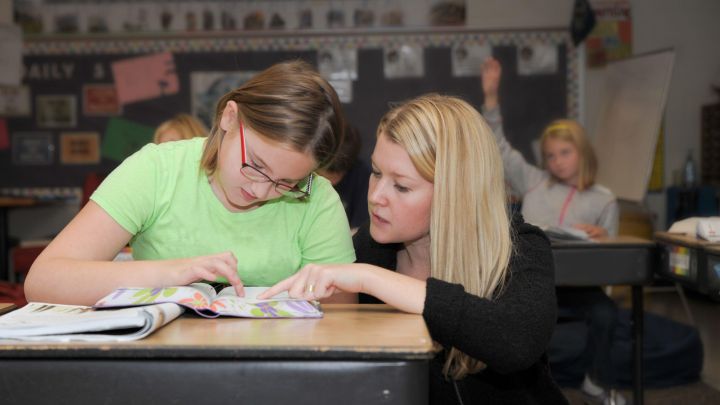Assessment, Learning Intentions, and Learning Engagement
In our first post to this blog on the topic of assessing student learning while teaching remotely, we made the point that assessment of learning continues to have a place in our teaching and learning strategies during this time. In his thoughtful communication with colleagues, which we shared in that post, Aaron Meckes urged colleagues to take this opportunity to assess the important stuff, in which he included “learning.” Essentially, he encouraged educators to identify what is important for students to learn through their at-home learning experiences and to assess whether they have learned it. His encouragement to focus on the important stuff points to the significance of assessing for learning.
Assessing for learning raises at least two questions. First, what is important for students to learn? Another way to ask that question is, “What do we want students to know when they are done with an activity or experience?” A second question we might ask is how do we assess for learning?
...if we will ask students to show us what they learned about a topic, it is critical that they understand what it is that we intend for them to learn ...
As we noted in our first post, learning while at home, alternatively called remote learning, adds complexity to the task of assessing for learning. While assessment for learning might be more complicated during this time, it is eminently possible.
To begin, if we ask students to show us what they learned about a topic, they must understand what it is that we intend for them to learn through their interaction with a learning activity or learning experience. This is what Frey, Hattie, and Fisher (2018) call learning intentions. Learning intentions are exactly what the name implies: they are statements identifying what it is that a teacher intends her students to know through interacting with a lesson, activity, or experience. According to Frey et al., learning intentions:
"… have a priming effect on learners. They signal to the student what the purpose is for learning and prevent students from having to fall back to the lowest rung on the ladder, which is compliance … they cause students to see the relationship between the tasks they are completing and the purpose for learning." (p. 41)
A learning intention identifies for the learner what it is that we, as their teacher, want them to know. For example, a teacher might tell their learners that “I need you to identify the theme that runs throughout the novel/novelette …” Or, the teacher might incorporate levels of thinking, such as those found in Bloom’s Taxonomy (Bloom, Engelhart, Furst, Hill & Krathwohl, 1956), creating a learning intention that sounds like: “I need you to describe …” or, “How will you compare …” or, “You will select facts to show …” Frey et al. suggest that intentions tell students what, why, and how they will learn something.
...learning intentions “have a priming effect on learners. They signal to the student what the purpose is for learning and prevent students from having to fall back to the lowest rung on the ladder, which is compliance …"
Learning intentions that are clearly described offer to students a purpose for engaging with a lesson, activity, or experience. Beyond completing an activity for the sake of completing it, with a clearly stated purpose in mind, a student will likely embrace the reason behind the activity. With a purpose, a student has increased reason and motivation for engaging with an assignment. During this time when students are working at home, some with limited or no adult supervision (many parents continue to work either inside or outside of their home, making close supervision difficult), students need all the reasons for learning and engaging they can get. Understanding the intention behind their engagement with an assignment will likely increase their at-home learning engagement, or what many consider as motivation.
Consistent with the findings from research conducted and facilitated by education researchers from cast.org (formerly the Center for Applied Special Technology), providing clear learning intentions has the potential to increase learner engagement. Researchers from cast.org have identified three neural networks associated with effective learning: affective, recognition, and strategic. The affective network, largely responsible for the brain’s management of and engagement with information, provides a critical link between a learner’s encountering information and their interaction with it. The affective neural network, when engaged, will boost the learner's access to learning. According to UDL principles, clarifying the “why” of learning will increase the likelihood that learners will be interested in and will work with an assigned task. Researchers from cast.org argue that offering choice, clarifying relevance, and explaining the purpose, or the intended outcome, of a task or activity will increase the potential that students will engage meaningfully with an assignment. This is consistent with what Frey et al. mean when they advocate for learning intentions. The impact of learning intentions is borne out by Frey et al.’s findings of an effect size of .54 for learning intentions (Frey et al., p. 41), an effect size they define as having “potential to accelerate student achievement.”
With a purpose, a student has increased reason and motivation for engaging with an assignment.
A few quick words about the relationship between standards and learning intentions: first, though related, they are not the same. Standards are intended to provide broad learning goals. As such, they do not provide sufficient detail to provide clear direction to students for a particular assignment, activity, learning experience, or unit of study. Second, learning intentions should support the attainment of standards while they provide detail for lessons and units that are missing from standards.
How can one incorporate learning intentions into at-home learning strategies?

First, when designing, collecting, and organizing materials for students to use at home, a teacher must be able to articulate the intention for those materials. This includes paper packets that are sent home, as well as online activities and instruction. If a teacher can articulate their intention for a student’s engagement with the materials and activities they are preparing for a student, there is a good chance that intention can be voiced for the students.
Second, write out the intention and include it with materials and activities sent home or offered online. Imagine you are writing this intention on your classroom whiteboard/smart board as you begin your lesson. Write out your intention for the packets you develop and send home for the week and include it with the packet. If you’re using an online learning platform like Google Classroom, prepare and post learning intentions for your teaching activities. You might make a short video or audio recording of your learning intentions that you post to your Google Classroom. Incorporate the language of Bloom’s Taxonomy as a guide for both your thinking about the intention of an activity and what you intend for the student. Imagine the benefit of describing your learning intention for parents. Many parents struggle to understand what is expected of their child in a particular activity. Describing your learning intention for their student will empower both students and parents with insight into the what, why, and how of an activity/assignment.
We provide sample learning intention statements here.
Third, ask students to tell you how they accomplished the intentions. Did they meet your intention for them? How do they know they met that intention? Did they fully meet the intention, or do they need some coaching? As an aside, it is more important that they reflect on their accomplishment rather than that they reflect “accurately” on it. The act of self-reflection provides a powerful impact on students’ engagement with and ownership of their learning.
Fourth, if students can tell you that they accomplished your intention and can explain, even if generally, how they accomplished your intention, you have an assessment of their learning of the lesson concept. Reviewing their self-assessment can tell you if they learned what you intended them to learn, and it will give you valuable information about their ability to reflect on their learning.
Follow this link to see a sample feedback tool designed to describe learning intentions to students, coupled with a place to engage students in describing and assessing their role with these intentions.
In our next discussion of assessment in the age of COVID-19, we’ll look at additional strategies for assessing what students learn.
Sharing an example can showcase your intentions, which supports a learner’s ability to visualize success and understand expectations. Check out this video clip taken from the beginning of an assignment created by Mr. Steve DeBoer, a middle school teacher at one of our Member Schools, sharing his intentions through showcasing a final product.
References:
- Bloom, B.S., Engelhart, M.D., Furst, E.J., Hill, W.H., & Krathwohl, D.R. (1956). Taxonomy of Education Objectives: The classification of educational goals. Handbook I: Cognitive Domain. New York, NY: David McKay Co.
- CAST (n.d.). UDL Guidelines. Cast.org. http://udlguidelines.cast.org/...
- Frey, N., Hattie, J., & Fisher, D. (2018). Developing Assessment-Capable Visible Learners: Grades K-12. Thousand Oaks, CA: Corwin, a Sage Co.
- Hattie, J. (2015). John Hattie Learning Intentions . Retrieved from https://www.youtube.com/watch?v=OGyvDvOegXE
Authors:
Megan Cooke is a Teacher Consultant at All Belong
Phil Stegink is a Teacher Consultant at All Belong
A special thank you to Steve DeBoer for sharing his video with All Belong, showcasing the strategy where a final example is shared at the onset of student work.

Phil Stegink
Teacher Consultant, Special Projects
Phil Stegink works on special projects for All Belong and is an assistant professor of special education at Calvin College.
